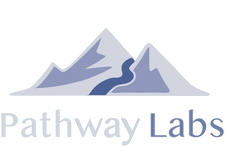Thanks to the use of technology, the education sector has undergone a significant transformation with the introduction of student information software. This innovative tool has revolutionized the way educational institutions track student progress and assess academic performance. Versus having to go through files manually, school administrators can track student academic performance in real time with the use of a student information software.
By automating administrative tasks and providing comprehensive data analysis, student information software enables educators to make informed decisions and optimize the learning experience for their students. We will explore the various ways in which student information software benefits educational institutions by effectively tracking student progress and improving academic performance of their student body.
Streamlining Administrative Tasks
One of the primary advantages of student information software is its ability to streamline administrative tasks. Traditionally, educators and administrators had to manage numerous paper-based records, making it time-consuming and error-prone. With student information software, important information such as attendance records, grades, and personal details can be easily recorded, organized, and accessed in a centralized digital system.
Some examples of this kind of automated tasks could be sending reminder emails to students, collecting tuition payments, or other tasks school administrators are currently tasked with. This type of automation not only saves valuable time but also reduces the likelihood of data loss or inconsistencies from manual data entry.
Comprehensive Data Analysis
Student information software allows educational institutions to collect and analyze vast amounts of data on student performance. By tracking grades, test scores, and attendance patterns, educators gain valuable insights into student progress and can identify areas that require attention. When looking for a student information software, be sure to search for one that offers robust data reporting features. A tool like MyPath actually offers prebuilt data reports, but also gives schools the ability to create customized reports based on what’s most important to their operations.
With comprehensive data analysis, schools can identify patterns, trends, and outliers, enabling them to personalize instruction and provide targeted support to struggling students. In addition to this, Educators can track the impact of teaching methods and curriculum changes, facilitating evidence-based decision-making. By having a student information system in place, schools can be more data driven when it comes to making decisions and measuring the impact on changes in the school curriculum.
Real-Time Progress Monitoring
Student information software provides real-time progress monitoring, giving educators and parents immediate access to student performance updates. Through an intuitive and modern interface, teachers can view individual student profiles, identify strengths and weaknesses, and provide timely feedback.
If needed, parents can also track their child's progress, allowing for proactive engagement and collaboration between teachers and parents. With real-time progress monitoring, you can enhance accountability, enabling early intervention to address academic challenges promptly. As a school administrator, you can also keep a pulse on how many students are on track to successfully graduate from their program.
Personalized Learning Paths
Another significant benefit of student information software is the ability to create personalized learning paths for students. By analyzing student data, educators can identify individual learning styles, preferences, and needs. With this information, they can tailor instruction and assignments to suit each student, promoting personalized learning experiences.
With student information software, you can also provide adaptive learning modules and resources, further enhancing the effectiveness of personalized education. By enabling educators to address the specific needs of each student, academic performance is optimized, and student engagement is increased.
Enhanced Communication and Collaboration
Effective communication and collaboration are crucial for student success. Student information software facilitates seamless communication between teachers, administrators, students, and parents. Teachers can share progress reports, assignments, and important announcements digitally, ensuring that information reaches all stakeholders promptly. With a tool like MyPath, school administrators can actually email or text students directly and simplify back and forth communication.
In secondary education settings, parents can access student information portals to stay informed about their child's academic journey and communicate with teachers easily. With improved communication and collaboration, schools can foster a supportive learning environment and enable stakeholders to work together towards student success.
Conclusion
Student information software has revolutionized the education sector by providing a powerful tool to track student progress and enhance academic performance. By streamlining administrative tasks, offering comprehensive data analysis, enabling real-time progress monitoring, supporting personalized learning paths, and facilitating communication and collaboration, this software empowers educators and students alike.
As educational institutions continue to embrace technology, student information software will undoubtedly play a vital role in shaping the future of education, ensuring that each student receives personalized attention and reaches their full potential. If you’re looking to improve your own school’s student performance tracking, click here to learn more about Pathway Labs.

